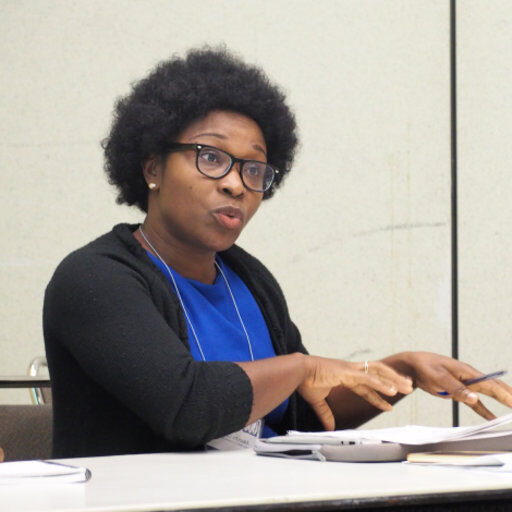To enhance financial transfers, government has rolled out several policies and financial services to both the diaspora and recipients at home. These include savings and investment schemes and money transfer schemes.
Direct Investments and Savings
Direct investment schemes are a significant avenue created by government to channel financial remittances from the diaspora toward socioeconomic development. These include regular savings accounts and diaspora-specific financial products like individually managed accounts and investment disbursement accounts. These allow members of the Ghanaian diaspora to operate foreign accounts in Ghanaian banks.
Another formal savings and investment scheme is the diaspora bond. In 2007, government issued a Golden Jubilee Savings Bond. The local currency bond was GH¢50million with an interest rate of 15 percent.
It was available to Ghanaian citizens only, although the marketing mainly targetted members of the non-resident Ghanaian diaspora. The nationality restriction excluded members of the Ghanaian diaspora without Ghanaian citizenship. Of the targetted GH¢50million, the bond subscription amounted to only GH¢20million. Of the GH¢20million raised, GH¢18.73million was raised from local sales and GH¢1.10million was from Ghanaian diasporas in the UK, Canada and US.
Money Transfers
Money transfer companies (MTCs) and financial institutions are the two central means of transferring and receiving cash in Ghana. Through their global networks, these institutions have provided avenues for diaspora communities to remit money to Ghana. They offer a variety of delivery service channels: such as direct-to-account, cash-to-mobile phone, cash-to-card and person-to-person (also known as cash-to-cash) transfers. Their platforms are integrated to allow money transfers from bank to bank, from MTC to bank, and through a mobile money system.
The Ghanaian diaspora relies on money transfer companies’ services because of their reliability, speed of delivery, accessibility and convenience in the recipient’s location (Quartey, 2009; Teye, Badasu and Yeaboah, 2019). The MTCs work with financial institutions, and many of the financial institutions in Ghana are agents to two or more MTCs. MTCs like Western Union and MoneyGram offer the best access to sending and receiving money because of their broader coverage, even though their charges are very high. Others such as Ria and Small World have lower fees but offer limited geographic range and unreliable networks (Teye, Badasu and Yeaboah, 2019).
Beyond the inflow of foreign cash, the use of these systems accrues other socioeconomic benefits to Ghana. These include money from service charge fees that is received by the MTCs and financial institutions. In Ghana, the recipient does not pay cash for these fees because the remitter pays the charges whenever they send money. However, the system also enables financial institutions to receive a proportion of remitters’ fees as a commission. These create both income revenues for the institutions and tax revenues for the state.
Additionally, expanding these institutions to accommodate the increasing number of remitters and total amounts sent is linked with job creation in both the private and public sectors. All major telecommunication companies in Ghana have expanded their services to include receipt and disbursement of financial remittances. Again, commercial service providers have increased their presence in communities by opening and maintaining branches to make them more accessible to remittance recipients.
Finally, numerous job opportunities have been created by improving and expanding technology to offer easy transfer and receipt of money from abroad. All of these factors contribute to Ghana’s economic growth and an increase in government revenues for development.
Challenges of the formal system for financial remittances
Notwithstanding the accumulated benefits of financial remittances toward Ghana’s development, challenges exist associated with the transfer process and mobilisation of such funds toward the state-led development agenda. For instance, many international remittances to Ghana are transferred through informal channels such as friends, relatives, self-carry when visiting home, and hiding money in posted letters (Ahinful, Boateng, and Oppong-Boakye, 2013).
These informal processes have proven to be unreliable and challenge the state’s quest to monitor cash inflow for planning purposes. As described by the International Fund for Agricultural Development, the transfer of remittances through informal channels tends to drain receiving countries of some benefits that can accrue from remittances (for example, savings and investments) (IFAD, 2006).
General challenges of money transfer to Ghana include the high cost of transfers, unfavourable exchange rates, and strict financial limitations on the amounts that can be transferred via mobile money systems.
According to the World Bank (2020), the average sending cost of cash remittances to sub-Saharan Africa remains the highest at 9 percent of the amount sent – almost double the cost of sending money to South Asia – against a global average of 6.8 percent. For example, Ghanaian remitters in the US pay close to 20 percent on any amount between US$50 and US$500, 3 percent for amounts between US$550 and US$1,000 and 2 percent for amounts of US$2,000 and above (Teye, Badasu and Yeaboah, 2019). Indeed, the less money you send, the higher the rate of charges.
A significant challenge in using the formal forms for sending remittances is the system’s exclusion of some Ghanaians abroad, namely irregular migrants. The majority of MTCs and financial institutions, especially banks, demand state-issued identification and utility bills detailing one’s identification before allowing one to open an account. However, most irregular migrants – who form part of the Ghanaian diaspora and regularly send remittances – do not possess these identification documents and thus are excluded from using these forms of money transfer.
Again, the refusal of financial institutions to pay remittances in foreign currencies as well as the relatively lower exchange rates of banks and MTCs compared to the forex are some of the reasons why about 50 percent of remittances from members of the Ghanaian diaspora are transferred through informal channels.
Conclusion
The Ghanaian government facilitates and guides the Ghanaian diaspora through formal gateways, which are directed mainly toward financial inflows.
The two approaches for ensuring the safety of financial inflows in Ghana are money transfers and investment and savings options designed specifically for the Ghanaian diaspora. These options have formalised the inflow of cash to the country and, as the data indicate, are a significant source of revenue for government’s development projects.
However, due to structural challenges such as transfer costs, low exchange rates used by the financial institutions and their demands for identity documents, a high proportion of the Ghanaian diaspora continues to use informal means of sending remittances. These informal channels are unsafe and unreliable for the sender and receiver, and drain Ghana of some benefits that can accrue from remittances (for example, savings and investments).
Also, Ghana’s over-reliance on financial gateways ignores other sectors of the Ghanaian diaspora and their contributions. These include in-kind remittances such as the inflow of food items, household items, medications and school supplies. These items are generally delivered directly to the recipient through the door-to-door freight business model. Many households and communities rely on these remittances. Studies among Ghanaians indicate that they have a direct bearing on living standards among families and communities.
Furthermore, members of the diaspora contribute significantly toward creating, maintaining and reproducing emotional bonds between themselves and communities in Ghana. For most members of the Ghanaian diaspora in North America and Europe, hometown associations have become the primary means of mobilising their cultural capital. The celebration of events such as hometown festivals and religious and social gatherings allows members of the Ghanaian diaspora, through their respective HTAs, to promote transgenerational bonds through the transfer of linguistic, attitudinal and symbolic cultural norms.
Finally, although diaspora scholarship acknowledges complexities in the composition of diasporas, including sometimes acknowledging their various resources and transfers, policymaking remains inadequate to accommodate these variations. The limitations of a narrower conceptualisation of the diaspora and its potential value partly account for the government’s provision of limited formal gateways incapable of accommodating the multiple ways in which the Ghanaian diaspora can contribute to development at both the family and community levels.
At the policy level, this study recommends conceptualising the Ghanaian, and more widely African, diaspora as a heterogeneous group endowed with varied resources. These people actively deploy their resources toward sustaining families and lives with specific and immediate concerns for their communities, both home and abroad.
Credit: https://doi.org/10.4000/poldev.4818










